Ditapis dengan

Theoretical perspectives on information sharing in supply chains
The purpose of this paper is to explore what theoretical lenses have been used to analyze and understand information sharing in supply chains. The paper elaborates on the predominant theories and discusses how they can be integrated to research different aspects of information sharing. Design/methodology/approach – The paper carried out a structured literature review by using a combination of…
- Edisi
- 19/5/6 (2014) 609–625
- ISBN/ISSN
- 1359-8546
- Deskripsi Fisik
- 19 p.
- Judul Seri
- Supply Chain Management: An International Journal
- No. Panggil
- ATC LO KEM t

Twenty years of IJLM: evolution in research
The purpose of this paper is to evaluate research trends observed in the International Journal of Logistics Management (IJLM) during its first 20 years of publication. Design/methodology/approach – A content analysis was conducted of the IJLM’s first 20 years of publication (330 articles in total) to identify changing trends in subject matter, use of theory, type of research methodology, an…
- Edisi
- Vol. 23 No. 1, 2012 pp. 4-30
- ISBN/ISSN
- 0957-4093
- Deskripsi Fisik
- 29 p.
- Judul Seri
- The International Journal of Logistics Management
- No. Panggil
- ATC LO TRO t C.1

Workplace safety in the supply chain- a review of the literature and call for…
The purpose of this paper is to review the literature and call for additional research into the human, operational, and regulatory issues that contribute to workplace safety in the supply chain.
- Edisi
- Vol. 19 No. 1, 2008 pp. 65-83
- ISBN/ISSN
- 0957-4093
- Deskripsi Fisik
- 21 p .
- Judul Seri
- The International Journal of Logistics Management
- No. Panggil
- ATC LO CAN w C.1

Collaboration in Finnish-Russian supply chains: Effects on performance and th…
The management of international supply chains may significantly contribute to the successful outcome of exports. The purpose of this paper is to investigate the level of supply chain collaboration in an uncertain cross-border context, and whether it improves supply chain performance The moderating role of export experience and intensity to the collaboration-performance relationship is also in…
- Edisi
- Vol. 3 No. 3, 2008 pp. 246-265
- ISBN/ISSN
- 1746-5265
- Deskripsi Fisik
- 22 p.
- Judul Seri
- Baltic Journal of Management
- No. Panggil
- ATC LO LON c
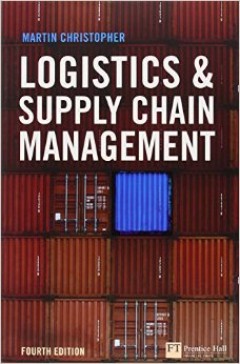
Logistics & supply chain management
When the first edition of this book was published in 1992, supply chain management as an idea was still in its infancy and relatively few companies had made it a priority. The same was true for logistics management, although its precursor, distribution management, was increasingly being recognised as important both in terms of cost and for its potential impact on sales. In the intervening yea…
- Edisi
- Fourth Edition
- ISBN/ISSN
- 978-0-273-73112-2
- Deskripsi Fisik
- xi, 269p
- Judul Seri
- -
- No. Panggil
- TXT LO CHR l
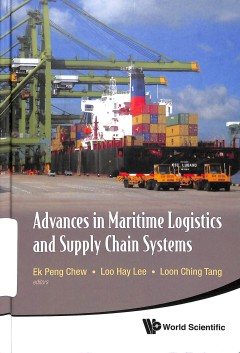
Advances in Maritime Logistik and Supply Chain Systems
This timely book discusses the recent developments in maritime logistics, an important specialized area for the global economy. It includes issues such as the recent economic crisis, port competition and development, and provides insights and trends relating to these issues. Consisting of renowned researchers worldwide, the primary objective of the book identifies some of the new problems and c…
- Edisi
- -
- ISBN/ISSN
- 13-978-981-4329-85-9
- Deskripsi Fisik
- xvi, 315 p. ; 26 cm.
- Judul Seri
- -
- No. Panggil
- TXT LO SON m
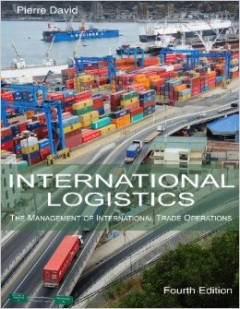
International Logistics: The Management of International Trade Operations
A full-color textbook covering all of the concepts of international logistics. This textbook is written from the perspective of the users, those managers who are actively exporting or importing goods or are otherwise involved in international trade operations. All of the relevant issues are thoroughly explained, including documentation, terms of payment, terms of trade (2010 Incoterms rules), e…
- Edisi
- 4th ed.
- ISBN/ISSN
- 978-0-9894906-0-3
- Deskripsi Fisik
- xxvi, 695p. ; 28cm.
- Judul Seri
- -
- No. Panggil
- TXT LO DAV i
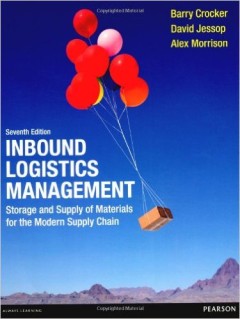
Inbound Logistics Management : Storage and Supply of Materials for the Modern…
This well-established text provides an authoritative and comprehensive overview of the practice and supporting systems relating to the storage and supply of materials, from elementary principles and simplest methods to the most advanced automated operations. It is an invaluable guide to inbound logistics for both students and practitioners.
- Edisi
- 7th ed.
- ISBN/ISSN
- 978-0-273-72048-5
- Deskripsi Fisik
- xviii, 317p. ; 25cm.
- Judul Seri
- -
- No. Panggil
- TXT LO CRO i C.1
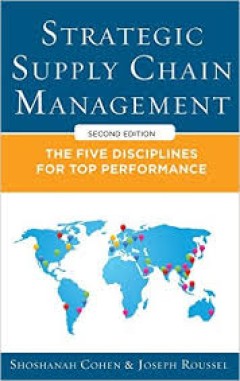
Strategic Supply Chain Management : The Five Disciplines for Top Performance
The global landscape has changed dramatically since the first edition of Strategic Supply Chain Management established itself as the authority on creating value and achieving competitive advantage from the supply chain. Shorter economic cycles, more-frequent natural disasters, higher costs in low-cost countries, more-restricted access to working capital, and greater focus on sustainability have…
- Edisi
- 2nd ed.
- ISBN/ISSN
- 978-0-07-181308-2
- Deskripsi Fisik
- xvii, 298p. ; 24cm.
- Judul Seri
- -
- No. Panggil
- TXT LO COH s C.1
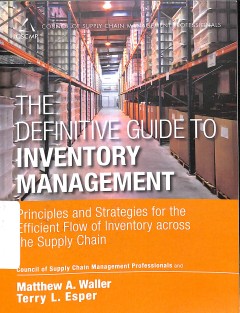
The definitive guide to inventory management : principles and strategies for …
The definitive guide to inventory management : principles and strategies for the efficient flow of inventory across the supply chain
- Edisi
- -
- ISBN/ISSN
- 978-0-13-344882-5
- Deskripsi Fisik
- xii, 195 p.; 25 cm
- Judul Seri
- -
- No. Panggil
- TXT LO WAL d

The logistics and supply chain toolkit : over 90 tools for transport, warehou…
- Edisi
- -
- ISBN/ISSN
- 978-0-7494-6808
- Deskripsi Fisik
- xi, 313 p, 22 cm
- Judul Seri
- -
- No. Panggil
- LO RIC t
- Edisi
- -
- ISBN/ISSN
- 978-0-7494-6808
- Deskripsi Fisik
- xi, 313 p, 22 cm
- Judul Seri
- -
- No. Panggil
- LO RIC t
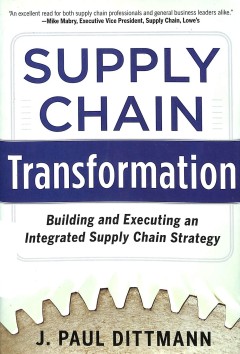
Supply chain transformation : building and executing an integrated supply cha…
- Edisi
- -
- ISBN/ISSN
- 978-0-07-179830-3
- Deskripsi Fisik
- iii, 250 p., ; 24 cm ; index
- Judul Seri
- -
- No. Panggil
- LC 658.785 DIT s
- Edisi
- -
- ISBN/ISSN
- 978-0-07-179830-3
- Deskripsi Fisik
- iii, 250 p., ; 24 cm ; index
- Judul Seri
- -
- No. Panggil
- LC 658.785 DIT s
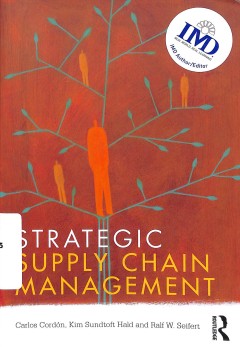
Strategic supply chain management
The supply chain is at the heart of every successful business organization's decision-making process. This textbook explains how to create a winning supply chain management strategy by spotlighting how senior executives in European and US companies have turned their supply chains into strategic weapons designed to convert threats, risks and outside pressures into competitive advantages. Strate…
- Edisi
- -
- ISBN/ISSN
- 978-0-415-59176-8
- Deskripsi Fisik
- ix, 278 p., ; 24 cm
- Judul Seri
- -
- No. Panggil
- LC 658.785 COR s

Managing logistics and supply chain challenges : singapore insights and persp…
Strategically located in Asia, Singapore has built on its geographical advantage to become one of the world s leading logistics hubs and a preferred location for leading manufacturers to establish regional distribution centres. Its world-class infrastructure, excellent connectivity, efficient customs, pro-business environment, educated workforce and stable government have made Singapore a compe…
- Edisi
- -
- ISBN/ISSN
- 978-981-4524-865
- Deskripsi Fisik
- xx, 467 p, 23 cm
- Judul Seri
- -
- No. Panggil
- LC 658.785 WEN m
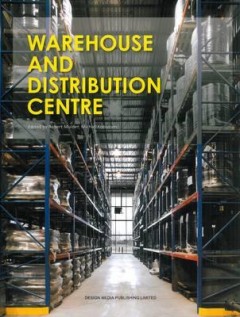
Warehouse and Distribution Centre
- Edisi
- -
- ISBN/ISSN
- 978-988-15663-9-3
- Deskripsi Fisik
- 250 p., ; 26 cm
- Judul Seri
- -
- No. Panggil
- REF LO MUL w
- Edisi
- -
- ISBN/ISSN
- 978-988-15663-9-3
- Deskripsi Fisik
- 250 p., ; 26 cm
- Judul Seri
- -
- No. Panggil
- REF LO MUL w
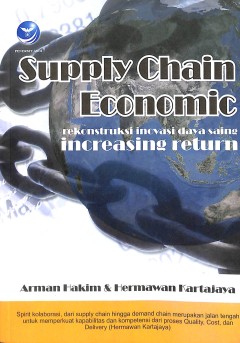
Supply chain economic : rekonstruksi inovasi daya saing increasing return
Buku ini mengulas dengan menarik berbagai aspek tentang pertumbuhan ekonomi, peran inovasi teknologi dan network. Sangat direkomendasikan untuk dibaca oleh penentu kebijakan ekonomi maupun pengambil keputusan di perusahaan.
- Edisi
- -
- ISBN/ISSN
- 978-979-29-3451-9
- Deskripsi Fisik
- x, 132 p., 21 cm
- Judul Seri
- -
- No. Panggil
- LC 621.86 HAK s

Integrating corporate social responsibility and other strategic foci in a dis…
The purpose of the paper is to explore the challenges of integrating corporate social responsibility (CSR) with other strategic foci into the supply/contractor chain, both conceptually and empirically, with a focus on one sectorial case: the Norwegian upstream petroleum industry. It compares contradictory theories of strategic focus and explores their implications for the organisation of the su…
- Edisi
- VOL. 7 NO. 2 2007, pp. 194-208
- ISBN/ISSN
- 1472-0701
- Deskripsi Fisik
- 17 p.
- Judul Seri
- Corporate Governance: The international journal of business in society
- No. Panggil
- ATC MR MID i

Perception of Malaysian Food Manufacturers Toward Halal Logistics
This article measures the perception of Malaysian food manufacturers toward halal logistics through an industry survey conducted in Malaysia. Based on a survey with 44 food manufacturers in Malaysia, results indicate that the responsibility of halal logistics according to the manufacturer is a shared responsibility in the halal food supply chain and value chain. Second, the study confirms that …
- Edisi
- 26:218–233, 2014
- ISBN/ISSN
- 1528-6983
- Deskripsi Fisik
- 17 p.
- Judul Seri
- Journal of International Food & Agribusiness Marketing
- No. Panggil
- ATC LO TIE p.

Understanding supply chain management concepts in the context of port logisti…
In academia as in practice, seaports are increasingly viewed as elements in supply chains. It is argued that seaports should add value to shippers by aligning their own business activities with shippers’ Supply Chain Management (SCM) strategies and requirements. The implications of this ‘port-SCM’ philosophy are not fully explored, however. In this context, it is especially important to c…
- Edisi
- 2014 Volume 29(4): 376–385
- ISBN/ISSN
- 1648-3480
- Deskripsi Fisik
- 11 p.
- Judul Seri
- Transport
- No. Panggil
- ATC LO HER u

Interorganizational Collaborative Forecasting and Replenishment Systems and S…
Collaborative Forecasting and Replenishment (CFAR) is a new interorganizational system that enables retailers and manufacturers to forecast demand and schedule production jointly. The capabilities of CFAR exceed those of the traditional ED1 because CFAR allows exchange of complex decision support models and manufacturerhetailer strategies. The proponents of CFAR claim that the fastest way for r…
- Edisi
- Volume 30 Number 4 Fall 1999
- ISBN/ISSN
- -
- Deskripsi Fisik
- 19 p.
- Judul Seri
- Forecasting and Replenishment System
- No. Panggil
- ATC LO SRI i

An Activity-Based Costing Model for Logistics Operations of Manufacturers and…
The logistics costs of industrial enterprises in a supply chain are studied. The following aspects of logistics costs are included: an ABC (Activity-Based Costing) calculation model for logistics; average logistics costs of Finnish industrial manufacturers and suppliers; the factors which in¯ uence a company’s cost ef® ciency in logistics; and an ABC simulation model for the logistics costs…
- Edisi
- Vol. 3, No. 1, 2000
- ISBN/ISSN
- 1469-848X
- Deskripsi Fisik
- 15p
- Judul Seri
- International Journal of Logistics Research and Applications: A Leading Journal of Supply Chain Management
- No. Panggil
- ATC LO MAN a
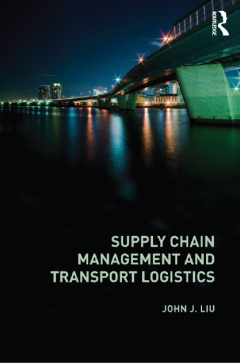
Supply chain management and transport logistics
- Edisi
- -
- ISBN/ISSN
- 978–0–203–80586–2
- Deskripsi Fisik
- -
- Judul Seri
- -
- No. Panggil
- TXT LO LIU s
- Edisi
- -
- ISBN/ISSN
- 978–0–203–80586–2
- Deskripsi Fisik
- -
- Judul Seri
- -
- No. Panggil
- TXT LO LIU s

the Palgrave handbook of humanitarian logistics and supply chain management
- Edisi
- -
- ISBN/ISSN
- 978-1-137-59099-2
- Deskripsi Fisik
- -
- Judul Seri
- -
- No. Panggil
- TXT LO KOV p
- Edisi
- -
- ISBN/ISSN
- 978-1-137-59099-2
- Deskripsi Fisik
- -
- Judul Seri
- -
- No. Panggil
- TXT LO KOV p

Port-focal logistics and global supply chains
- Edisi
- -
- ISBN/ISSN
- 978-1-137-27369-7
- Deskripsi Fisik
- xx, 240 p.
- Judul Seri
- -
- No. Panggil
- TXT LO ADO p
- Edisi
- -
- ISBN/ISSN
- 978-1-137-27369-7
- Deskripsi Fisik
- xx, 240 p.
- Judul Seri
- -
- No. Panggil
- TXT LO ADO p
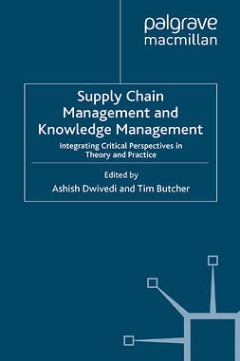
Supply chain management and knowledge management
- Edisi
- -
- ISBN/ISSN
- 978-0-230-23495-6
- Deskripsi Fisik
- xxx, 309 p.
- Judul Seri
- -
- No. Panggil
- TXT MG DWI s
- Edisi
- -
- ISBN/ISSN
- 978-0-230-23495-6
- Deskripsi Fisik
- xxx, 309 p.
- Judul Seri
- -
- No. Panggil
- TXT MG DWI s
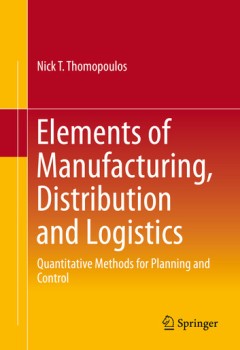
Elements of danufacturing, distribution and logistics: quantitative methods f…
- Edisi
- -
- ISBN/ISSN
- 978-3-319-26862-0
- Deskripsi Fisik
- -
- Judul Seri
- -
- No. Panggil
- TXT LO THO e
- Edisi
- -
- ISBN/ISSN
- 978-3-319-26862-0
- Deskripsi Fisik
- -
- Judul Seri
- -
- No. Panggil
- TXT LO THO e
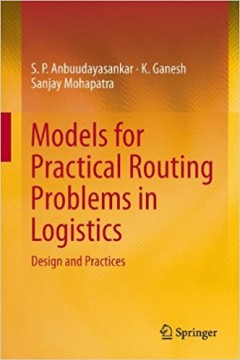
Models for practical routing problems in logistics: design and practice
- Edisi
- -
- ISBN/ISSN
- 978-3-319-05035-5
- Deskripsi Fisik
- -
- Judul Seri
- -
- No. Panggil
- TXT LO ANB m
- Edisi
- -
- ISBN/ISSN
- 978-3-319-05035-5
- Deskripsi Fisik
- -
- Judul Seri
- -
- No. Panggil
- TXT LO ANB m
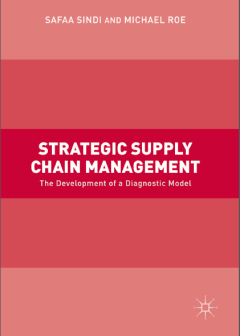
Strategic supply chain management: the development of diagnostics model
- Edisi
- -
- ISBN/ISSN
- 978-3-319-54843-2
- Deskripsi Fisik
- -
- Judul Seri
- -
- No. Panggil
- TXT MG Sin s
- Edisi
- -
- ISBN/ISSN
- 978-3-319-54843-2
- Deskripsi Fisik
- -
- Judul Seri
- -
- No. Panggil
- TXT MG Sin s
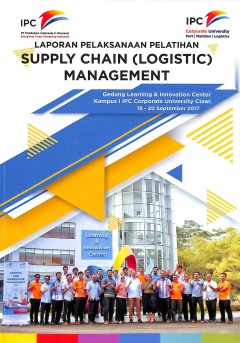
Laporan Pelaksanaan Pelatihan : Supply Chain (Logistic) Management
- Edisi
- 18 -20 September 2017
- ISBN/ISSN
- -
- Deskripsi Fisik
- 15 p., + atc., 21 cm.
- Judul Seri
- -
- No. Panggil
- IPC REP 2017 SUP s
- Edisi
- 18 -20 September 2017
- ISBN/ISSN
- -
- Deskripsi Fisik
- 15 p., + atc., 21 cm.
- Judul Seri
- -
- No. Panggil
- IPC REP 2017 SUP s

Supply chain logistics risks from the back room to the board room
Risks and uncertainties are ever more noted and factored into decision making today, and those stemming from supply chains are prominent in the competitiveness and viability of companies and organizations. The idea that every supply chain is made up of five internal chain/network constructs is presented, and these are physical, financial, informational, relational, and innovational. Further, fo…
- Edisi
- Vol. 34 No. 5, 2004
- ISBN/ISSN
- -
- Deskripsi Fisik
- 10 p.
- Judul Seri
- International Journal of Physical Distribution & Logistics Management
- No. Panggil
- ATC LO CAV s

The moderating role of supply network structure on the customer integration-e…
The purpose of this paper is to study whether a fast supply network structure interacts with customer integration (CI) by positively moderating the relationship between CI and efficiency performance.
- Edisi
- Vol. 33 No. 4, 2013
- ISBN/ISSN
- -
- Deskripsi Fisik
- 24 p.
- Judul Seri
- International Journal of Operations & Production Management
- No. Panggil
- ATC LO DAN t

Effective supply chain research via the quick scan audit methodology
This paper aims to provide an answer to the important question of how can accurate assessment of supply chain practice and performance be conducted? By conducting audits across a sample of value streams it is thereby possible to identify the components of “good practice” via evidencebased procedures.
- Edisi
- Vol. 16 Iss 1 pp. 5 - 10
- ISBN/ISSN
- -
- Deskripsi Fisik
- 8 p.
- Judul Seri
- Supply Chain Management: An International Journal
- No. Panggil
- ATC LO TOW e

Educating the supply chain logistics for humanitarian efforts in Africa: a ca…
There are gaps in the countries of Africa between basic universal health care and what is provided. Educating those who are trying to help is important to bring about change. Recently, there are many organizations and individuals responding to those needs, including governmental and non-governmental organizations (NGO). These entities strive to improve the conditions of the African people by pr…
- Edisi
- Vol. 58 No. 5, 2009
- ISBN/ISSN
- -
- Deskripsi Fisik
- 23 p.
- Judul Seri
- International Journal of Productivity and Performance Management
- No. Panggil
- ATC LO PET r

eBusiness and supply chain integration
The purpose of this study is to examine how four large organisations have approached the implementation of new eBusiness mechanisms: namely online order processing, eProcurement, reverse auctions, and a private exchange. The objectives are to establish whether supply chain integration is an identified goal for the firms involved and to evaluate the extent of integration achieved through these p…
- Edisi
- Vol. 21 No. 3, 2008
- ISBN/ISSN
- -
- Deskripsi Fisik
- 22 p.
- Judul Seri
- Journal of Enterprise Information Management
- No. Panggil
- ATC LO SMA e

Distribution network design: a literature review and a research agenda
The purpose of this paper is threefold. First, it classifies research on distribution network design (DND) according to the methodologies adopted and themes tackled. Second, it discusses the main implications for practitioners. Finally, it proposes a few promising directions for future research.
- Edisi
- Vol. 45 No. 5, 2015
- ISBN/ISSN
- -
- Deskripsi Fisik
- 28 p .
- Judul Seri
- International Journal of Physical Distribution & Logistics Management
- No. Panggil
- ATC LO PER d

Controlling the sustainability of food supply chains
For the food industry, the depletion of arable land and a growing world population demand controlling the sustainability of agricultural inputs to the industry. Controlling the sustainability of these supplies means controlling the economic, social, and environmental performance of the supply chain. In practice, little is known about how companies can efficiently extend their existing supply ch…
- Edisi
- Vol. 10 Iss 1 pp. 7 - 10
- ISBN/ISSN
- -
- Deskripsi Fisik
- 7 p.
- Judul Seri
- Supply Chain Management: An International Journal
- No. Panggil
- ATC LO MEI c

Supply Chain Security Orientation: Conceptual Development And A Proposed Fram…
This paper aims to report on an exploratory study investigating supply chain security orientation (SCSO), a firm-level construct addressing companies’ multiple approaches toward mitigation of supply chain security breaches and supply chain risk management.
- Edisi
- Vol. 19 No. 1, 2008
- ISBN/ISSN
- -
- Deskripsi Fisik
- 27 p.
- Judul Seri
- The International Journal of Logistics Management
- No. Panggil
- ATC LO MIC s

Supply chain risks: a review and typology
Supply chain security (SCS), as a component of an organization’s overall supply chain risk management strategy, has become a critical factor for businesses and government agencies since September 11, 2001, yet little empirical research supports policy or practice for the field. Therefore, this paper develops and presents a categorization of SCS based on existing research. This categorization …
- Edisi
- Vol. 20 No. 1, 2009
- ISBN/ISSN
- -
- Deskripsi Fisik
- 34 p.
- Judul Seri
- The International Journal of Logistics Management
- No. Panggil
- ATC LO GOL s

Supply chain strategy, flexibility, and performance A comparative study of SM…
The purpose of this paper is to compare the supply chain strategy, flexibility, and performance relationships in the context of SMEs in Canada and Pakistan.
- Edisi
- Vol. 25 No. 2, 2014
- ISBN/ISSN
- -
- Deskripsi Fisik
- 20 p.
- Judul Seri
- The International Journal of Logistics Management
- No. Panggil
- ATC LO FAN s

Supply chain strategy in a global paper manufacturing company: a case study
The purpose of this paper is to analyze the relationship between corporate and supply chain strategy, as well as its implementation in a multinational paper producing company. Traditionally paper producing companies have had a strong interest in developing a physical infrastructure for their customer deliveries. However, supply chain thinking is still an unstructured issue in the case company.
- Edisi
- Vol. 109 No. 1, 2009
- ISBN/ISSN
- -
- Deskripsi Fisik
- 21 p .
- Judul Seri
- Industrial Management & Data Systems
- No. Panggil
- ATC LO KOS s

Supply chain services from a service-dominant perspective: a content analysis
This paper aims to apply service-dominant logic thinking to the field of supply chain management (SCM) in order to classify, structure, and analyze different types of supply chain services (SCS) collected from interdisciplinary literature. The authors investigate how value is co-created between supply chain actors and develop research propositions regarding the influence of service type on valu…
- Edisi
- Vol. 44 No. 1/2, 2014
- ISBN/ISSN
- -
- Deskripsi Fisik
- 24 p.
- Judul Seri
- International Journal of Physical Distribution & Logistics Management
- No. Panggil
- ATC LO STE s

Supply chain risk management: a new methodology for a systematic literature r…
Supply chain risk management (SCRM) has recently gained increasing attention in the supply chain context, both from the practitioners’ perspective and as a research area. Given the relevance of the topic, the aim of the present paper is to present a focused literature review, investigating the process of knowledge creation, transfer and development from a dynamic perspective within the contex…
- Edisi
- Volume 17 · Number 4 · 2012 · 403–418
- ISBN/ISSN
- -
- Deskripsi Fisik
- 19 p.
- Judul Seri
- Supply Chain Management: An International Journal
- No. Panggil
- ATC LO STR c

Supply chain networks and service-dominant logic: suggestions for future rese…
The service-dominant (S-D) logic views supply chains as value co-creation networks. These networks promote knowledge growth amongst network members via resource deployment and coordination. The exchange of knowledge and utilization of operant resources among the network members leads to co-created service offerings and value proposals for the end-users, with the ultimate goal of transforming en…
- Edisi
- Vol. 41 No. 7, 2011
- ISBN/ISSN
- -
- Deskripsi Fisik
- 13 p.
- Judul Seri
- International Journal of Physical Distribution & Logistics Management
- No. Panggil
- ATC LO BEI s

The shipping point : the rise of China and the future of retail supply chain …
The author, Peter Levesque, has over 20 years of international transportation and logistics experience and has been working in Hong Kong since 1996. Prior to joining Modern Terminals, he served at several management positions including American President Lines, DHL’s Supply Chain in Asia Pacific, CEVA Logistics, and co-founded a 3PL company, V-Logic Limited, in 2001. He also served as an Adju…
- Edisi
- Volume 28 Number 3 August 2012
- ISBN/ISSN
- -
- Deskripsi Fisik
- 6 p .
- Judul Seri
- The Asian Journal of Shipping and Logistics
- No. Panggil
- ATC LO SON t

Supply chain structures shaping portfolio of technologies Exploring the impac…
The purpose of this paper is to develop a better understanding of how the supply chain structure (i.e. degree of vertical integration) of a focal organization shapes the breadth of its portfolio of technologies.
- Edisi
- Vol. 45 No. 4, 2015
- ISBN/ISSN
- -
- Deskripsi Fisik
- 26 p.
- Judul Seri
- International Journal of Physical Distribution & Logistics Management
- No. Panggil
- ATC LO BHA s

Supply chain typology for configuring cost-efficient tracking in fashion logi…
The purpose of this paper is to propose a typology of radio frequency identification (RFID)-based tracking solution designs to fit differing fashion supply chains. The typology is presented as principles of form and function contributing toward a design theory of configurable RFID tracking for fashion logistics.
- Edisi
- Vol. 26 No. 1, 2015
- ISBN/ISSN
- -
- Deskripsi Fisik
- 21 p.
- Judul Seri
- The International Journal of Logistics Management
- No. Panggil
- ATC LO HOL s

Supply chain visibility: lost in translation?
The purpose of this paper is to describe miscommunication about the ubiquitous term “supply chain visibility” (SCV), to propose a precise definition for it and identify its salient characteristics.
- Edisi
- Volume 13 · Number 3 · 2008 · 180–184
- ISBN/ISSN
- -
- Deskripsi Fisik
- 7 p.
- Judul Seri
- Supply Chain Management: An International Journal
- No. Panggil
- ATC LO FRA s

Supply demand chain modeling utilizing logistical-based costing
The purpose of this research is to describe how total cost concept with logistical based costing (LBC) is developed in detail and then used to build logistical models on the Microsoft Excele platform that are integrated from the customer’s factory to the supplier’s door.
- Edisi
- Vol. 19 No. 3, 2006
- ISBN/ISSN
- -
- Deskripsi Fisik
- 17 p.
- Judul Seri
- Journal of Enterprise Information Management
- No. Panggil
- ATC LO STO s

Supply governance structures for reverse logistics systems
The purpose of this paper is to examine the changes in governance structures that evolved as reverse logistics systems were developed. The UK car crash repair sector was used as a case study.
- Edisi
- Vol. 33 No. 6, 2013
- ISBN/ISSN
- -
- Deskripsi Fisik
- 22 p.
- Judul Seri
- International Journal of Operations & Production Management
- No. Panggil
- ATC LO HAR s

Supply network performance measurement: future challenges?
This reflective paper aims to identify and discuss key areas for the development of, and research into, supply network performance measurement systems.
- Edisi
- Vol. 18 No. 2, 2007
- ISBN/ISSN
- -
- Deskripsi Fisik
- 22 p.
- Judul Seri
- The International Journal of Logistics Management
- No. Panggil
- ATC LO MOR s
 Karya Umum
Karya Umum  Filsafat
Filsafat  Agama
Agama  Ilmu-ilmu Sosial
Ilmu-ilmu Sosial  Bahasa
Bahasa  Ilmu-ilmu Murni
Ilmu-ilmu Murni  Ilmu-ilmu Terapan
Ilmu-ilmu Terapan  Kesenian, Hiburan, dan Olahraga
Kesenian, Hiburan, dan Olahraga  Kesusastraan
Kesusastraan  Geografi dan Sejarah
Geografi dan Sejarah